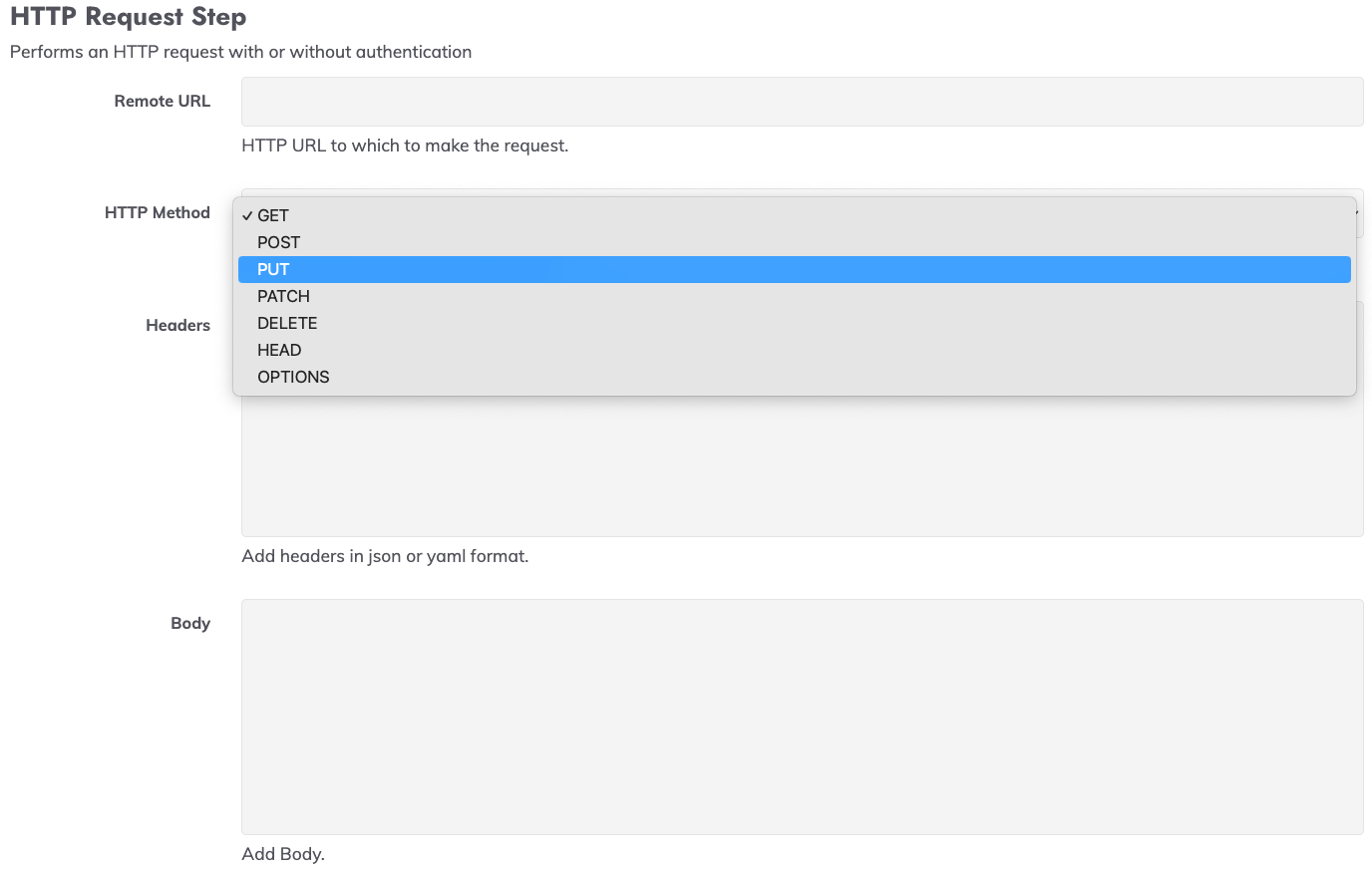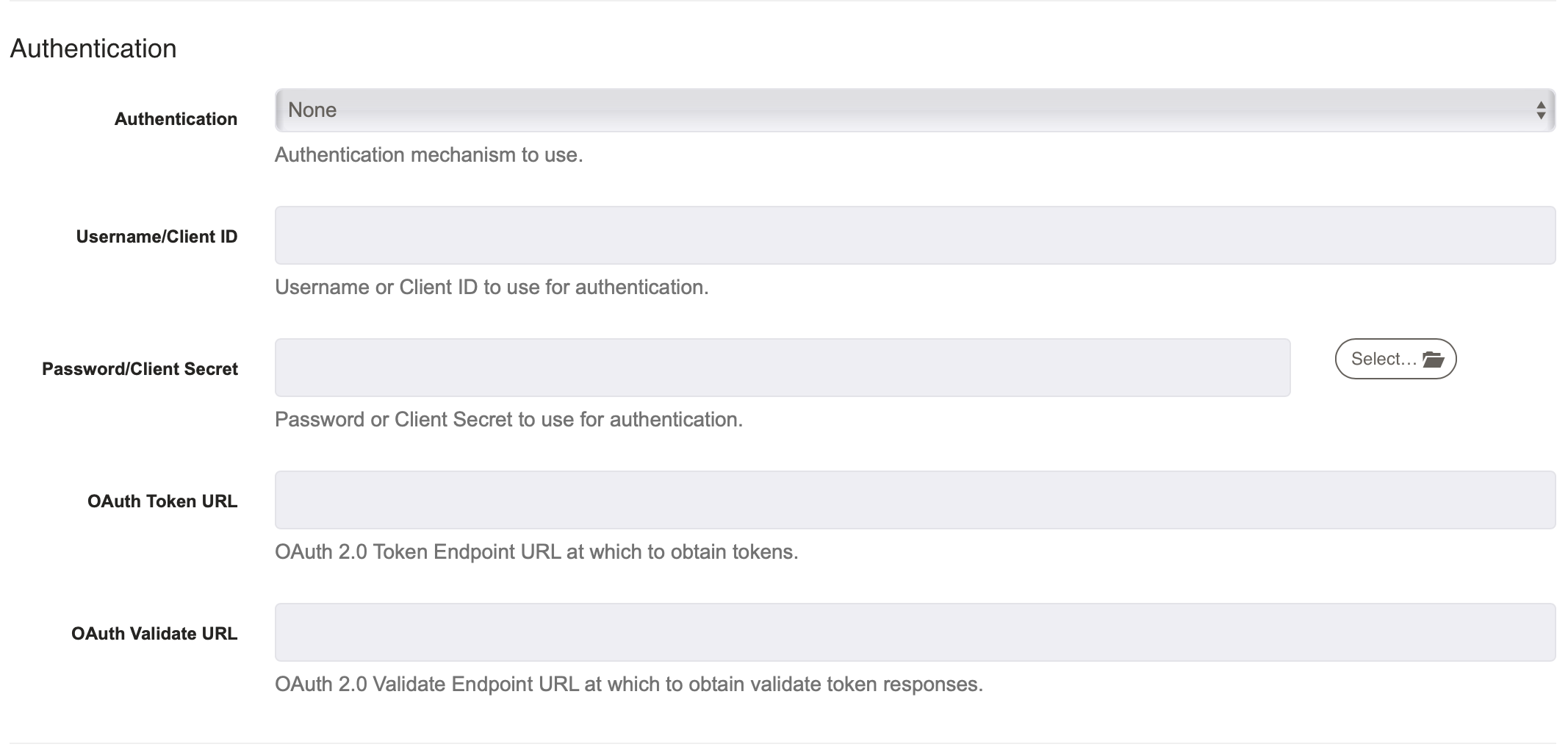HTTP Request Workflow Step
HTTP Request Workflow Step
This plugin executes an HTTP/S request to a remote endpoint.

Configuration
Remote URL: The remote endpoint for the HTTP request. This can be an HTTP or HTTPS endpoint. The URL must begin with
http://orhttps://.HTTP Method: The method of the HTTP request. One of:
GET,POST,PUT,DELETE,HEAD,OPTIONS,PATCH.Headers: Additional headers to include in the request. The headers can be added in YAML or JSON format.
YAML example:
- name: "User-Agent" value: "Buddy" - name: "Content-Type" value: "application/json"JSON example:
{ "name": "User-Agent", "value": "Buddy" }, { "name": "Content-Type", "value": "application/json" }
Body: The body of the HTTP request.
Request Timeout: The timeout in milliseconds for the HTTP request.
Validate SSL Certificates: If true, validate the SSL certificate of the remote endpoint.
Authentication: Optionally set the method of authentication to use - Basic or OAuth 2.0.

Username/Client ID: The username or client ID used for authentication.
Password/Client Secret: The password or secret key used for authentication. Select a secret from Key Storage.
OAuth Token URL: If using OAuth, provide the endpoint URL at which to obtain tokens.
OAuth Validate URL: If using OAuth, provide the endpoint URL at which to validate token responses.
Check Response Code?: If true, the step will fail if the response code does not match the expected response code.
Response Code: The expected response code from the HTTP request.
Print Response?: If true, the response from the HTTP request will be printed to the log.
Print Response to File?: If true, the response from the HTTP request will be printed to a file.
- File Path: The path to the file where the response will be written.
Print Response Code?: If true, the response code from the HTTP request will be printed to the log.
Use Proxy Settings?: If true, the step will use the proxy settings.
Proxy Settings from JVM Configuration
If proxy settings are configured in the JVM configuration or startup command, this plugin can use those settings. To use the JVM proxy settings, set the following property:
- Project properties:
project.plugin.WorkflowNodeStep.edu.ohio.ais.rundeck.HttpWorkflowNodeStepPlugin.useJvmProxySettings=true - Framework properties:
framework.plugin.WorkflowNodeStep.edu.ohio.ais.rundeck.HttpWorkflowNodeStepPlugin.useJvmProxySettings=true:::
- Project properties:
Proxy IP: The host of the proxy server. This can be an IP address or a hostname.
Proxy Port: The port of the proxy server.
Tips
This plugin doesn't support unsafe characters.
If you get this error message: Illegal character in scheme name at index it means that an unsafe character was used in the HTTP Request. All unsafe characters must always be encoded within a URL. For more information on unsafe characters see IETF | Internet Engineering Task Force
